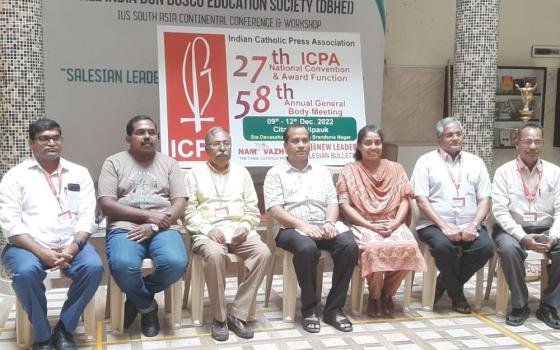I knew it was inevitable that the objections would begin to fly when John Allen, in his Aug. 19 column about World Youth Day, used a finding in a 2009 survey on religious life to bolster points he was making about a rise in what he terms “evangelical Catholicism.”
More than a few women religious from the “liberal” side of the divide reacted to the implication that the future of religious life is emerging from the conservative side of things.
That divide, by the way, is not only unfortunate, it is probably overstated for religious ideological reasons from either side of the spectrum. I’ve been in parishes where sisters of a very liberal, un-habited, persuasion coexist rather nicely with habit wearing traditionalists. I suspect, though I haven’t done extensive interviews on the matter, that where one lands is a matter of where one’s Catholic imagination is leading in answer to God’s call.
Allen cites the study carried out by the Center of Applied Research in the Apostolate at Georgetown University for the National Religious Vocations Conference to reinforce his assertion that the once anecdotal claim that younger Catholics are more conservative has become “an iron-clad empirical certainty.”
“Case in point: A 2009 study carried out by Georgetown’s Center of Applied Research in the Apostolate, and sponsored by the National Religious Vocations Conference, found a marked contrast between new members of religious orders in the United States today (the “millennial generation”) and the old guard. In general, younger religious, both men and women, are more likely to prize fidelity to the church and to pick a religious order on the basis of its reputation for fidelity; they’re more interested in wearing the habit, and in traditional modes of spiritual and liturgical expression; and they’re much more positively inclined toward authority.
“To gauge which way the winds are blowing, consider women’s orders. The study found that among those which belong to the Leadership Conference of Women Religious, considered the more “liberal” umbrella group, just one percent have at least ten new members; among those which belong to the Council of Major Superiors of Women Religious, seen as the more “conservative” group, a robust 28 percent have at least ten new members.”
Not to dispute John’s basic point about a core of young evangelical Catholics, but the issue of religious sisters is a bit more complicated than the paragraph suggests. The data is true, as far as those statistics go, and I ran into the same claims from some quarters deriving from the same data while doing reporting on the In Search of the Emerging Church Series in 2008-2010.
As a result of the objections from LCWR sisters, I went back to the ’09 study and called the researchers at CARA to clarify.
Context, it turns out, is important, and one must factor in the reality that the LCWR, according to the same people at CARA who did the religious life study, represents about 95 percent of the 55,944 religious sisters in the United States . While the fervor for the habit and a more traditional approach to religious life might generate a great deal of energy in some circles, the fact of the matter is that those circles are, by comparison, rather tiny. They might eventually stoke up a mighty storm, but only time will tell. At the moment, if one wants to calculate who has the greatest influence on how the church is perceived in the wider culture and on the nature of its work, it would be hard to overlook the significance of that much larger number, even if the population it represents is aging.
Further – and the people at CARA say no one has firm current data on this – while 28 percent of a tiny minority of orders may be experiencing growth of 10 members or more during the past 15 years (the time covered by the study), the real numbers of new members between the two camps is likely to show that the greater number of new members will be found on the LCWR side of things.
In the end, however, all of this may be panning for gold on opposite sides of a creek going dry.
Mary Gautier, senior research associate at CARA who oversaw the religious life study, said in a recent interview that the highest number of final professions in any order of women religious last year was nine. The next largest number was four. In other words, the numbers are really, really small whatever the case. And, she said, neither group of orders – LCWR or CMSWR – has a retention rate of more than 50 percent prior to profession of perpetual vows.
Far more indicative of the future may be the “experiments” in religious life, different forms of community that are occurring beyond the view of demographers. Perhaps the future lies in the various forms of associates, non-vowed men and women who align themselves with religious orders but are not professed members in the traditional sense. And there are many pastors and bishops who, at least privately, will tell you they don’t know what they’d do to keep churches and ministries running if it weren’t for the growth over the past few decades of lay ecclesial ministry.




